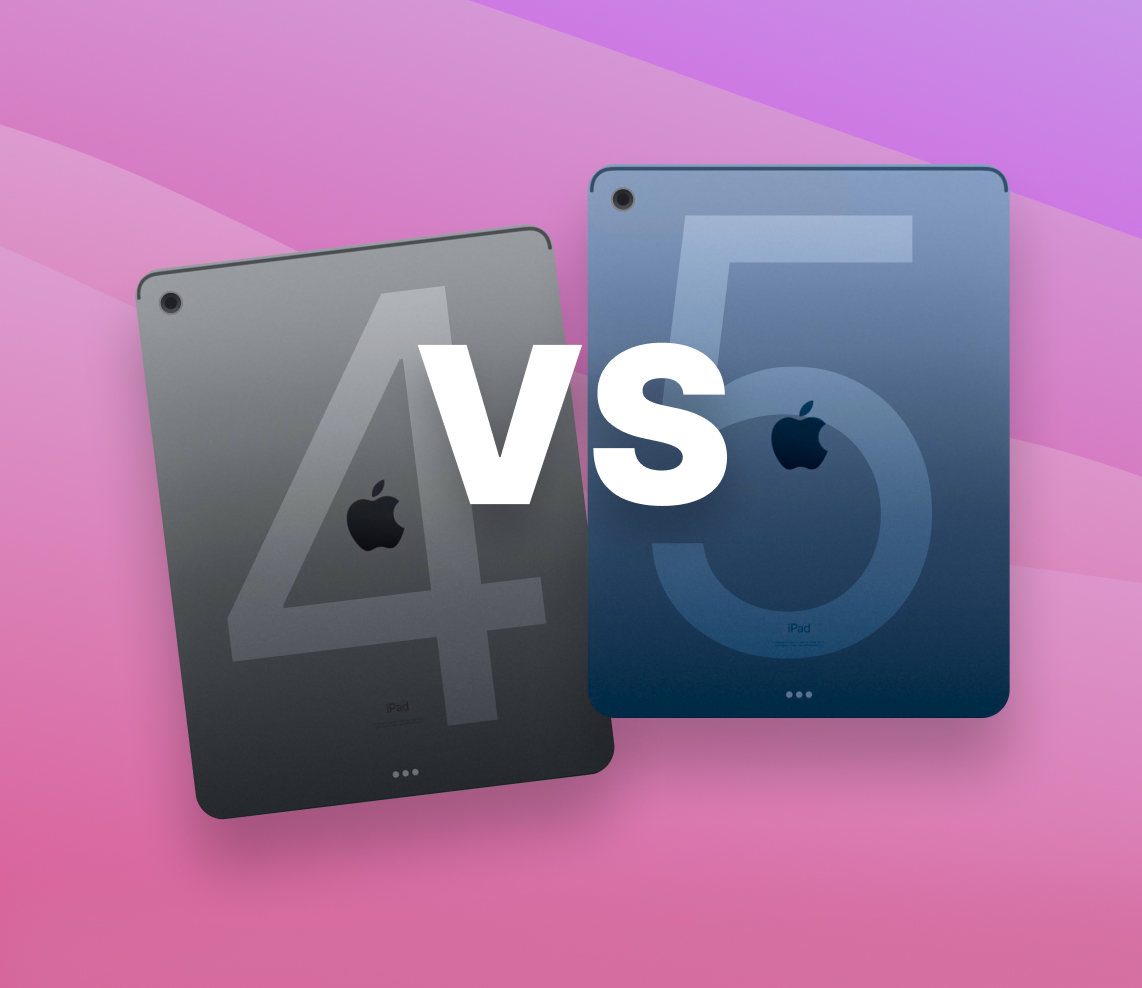The iPad Air 4 has been a popular choice for many people looking for an affordable tablet with high-end features. But now that the iPad Air 5 has been released, is it worth upgrading to the latest model of iPad Air? Are there any significant changes or upgrades that we will see on the iPad Air 5?
In this article, we will compare the difference between iPad 4th and 5th generation to help you make an informed decision. We will look at their specs and price, discuss their key differences, and provide an overall verdict on whether it’s worth upgrading from the Air 4 to the Air 5.
iPad Air 4 vs iPad Air 5: What’s New

With the new iPad Air 5, Apple needed to upgrade the already impressive iPad Air 4, but at the same time, they needed to keep enough separation from the iPad Pro. Let’s take a look at the differences between the iPad Air 4 vs 5 in terms of hardware, camera, battery life, and network connectivity.
?Hardware
One thing that sets apart the iPad 4th gen vs 5th gen is that the 5th gen houses a newer processor which is the M1 chip, the same processor that Apple uses in the iPad Pro and M1 MacBooks that launched in 2020.
The M1 chip gives the iPad Air 5 a gaming advantage as the M1 chip is much more powerful and gives a noticeable gap in terms of its performance in heavy applications such as gaming apps. The M1 chip from Apple is anticipated to be up to 60% faster than the A-series equivalent, such as the A14 Bionic chip found in the iPad Air 4 model.
Compared to the iPad Air 4, which only had 4GB of RAM, the iPad Air 5’s 64 and 256-gigabyte models both have 8GB of RAM. However, it will be much better if Apple also provides storage space of 128GB and 512GB variants as it allows its users to store more files or apps since it will double the storage space of the available models. Additionally, it will give its users a variety of options to choose from. However, the mere fact that an M1 chip is available in a non-pro version of an iPad is already quite impressive.
?Camera
The iPad Air 5 has a 12MP UltraWide front camera, while the iPad Air 4 still has the older 7MP front camera. In addition to the resolution upgrade, the front camera has a feature called Center Stage which helps ensure that the subject is always in the center of the frame. This feature can recognize and follow the subject as it moves around and zooms in and out.
While the front-facing camera has been updated in iPad Air 5, their rear-facing camera is the same 12MP UltraWide camera. Apple also did not add a flash as they did on the iPad mini 6.
Both of the cameras of iPad Air 4 and 5 can record a 4k resolution video with a refresh rate of up to 60fps. They also have slow-motion video support for 1080p at 120 fps or 240 fps.
?Battery Life
When it comes to their battery life, if you are just an average user, the battery of both devices can last up to 10 hours of surfing the web on WiFi or watching videos, and up to 9 hours of surfing the web using a mobile data network. But even though there’s no difference in the battery, we need to consider that the iPad Air 5 has the power of an M1 chip, therefore, it can have a shorter battery life if used with heavy apps than the iPad Air 4. All things in consideration, we say that the performance of the former is really worth it.
?Network
Both iPads come with WiFi 6 and Bluetooth 5.0 technology, but the cellular version of the iPad Air 5 now comes with 5G versus 4G on the iPad Air 4.
iPad Air 4 vs iPad Air 5: General Overview

The iPad Air 5 is compatible with cases and accessories made for the iPad Air 4, as they share the same body, shape, speaker placement, and button layout. Both iPads are compatible with the second-generation Apple Pencil, which offers an identical overall user interface. There are still two speakers, one on each side, and the audio is of decent quality. Here is a list of more detailed comparisons for the iPad Air 5 vs iPad Air 4.
| ?️ iPad Air 4 (2020) | ?️ iPad Air 5 (2022) | |
| ? Display | Liquid Retina display 10.9‑inch (diagonal) LED-backlit Multi-Touch display with IPS technology 2360×1640 resolution at 264 ppi Fingerprint-resistant oleophobic coating Fully laminated display True Tone display |
Liquid Retina display 10.9‑inch (diagonal) LED-backlit Multi-Touch display with IPS technology 2360×1640 resolution at 264 ppi Fingerprint-resistant oleophobic coating Fully laminated display True Tone display |
| ? Design | Height: 247.6mm Width: 178.5mm Depth: 6.1mm Weight (Wi-Fi): 458g Weight (Wi-Fi + Cellular): 460g |
Height: 247.6mm Width: 178.5mm Depth: 6.1mm Weight (Wi-Fi): 458g Weight (Wi-Fi + Cellular): 460g |
| ? Brightness | 500 nits | 500 nits |
| ? Connector | USB‑C Smart Connector (back) |
USB‑C Smart Connector (back) |
| ? Secure Authentication | Touch ID Fingerprint identity sensor built into the top button |
Touch ID Fingerprint identity sensor built into the top button |
| ? Processor | A14 Bionic | M1 |
| ✏️ Apple Pencil compatibility | Second-generation Apple Pencil | Second-generation Apple Pencil |
| ? Storage Options | 64GB, 256GB | 64GB, 256GB |
| ? Colors | Space gray, silver, rose gold, green, and blue | Space gray, starlight, pink, purple, and blue |
| ? Price | $499 | $599 |
FAQs
The answer to this question really depends on how you plan to use the 64GB variant of the iPad Air. If you plan to use it for light office work or with relatively small applications, then the short answer to this question is yes. However, if you plan to install a lot of applications and do creative work, 64GB may be too little.
Although the 256GB model of the iPad Air 4 will give you more than enough storage space, the iPad Air Gen 5 is unquestionably worthwhile if you intend to take advantage of the M1 chip of the iPad Air 5. As expected, when you look at the benchmark scores between the M1 chip on the iPad Air 5 and the A14 Bionic chip on the iPad Air 4, there’s a significant improvement in the overall performance of the Air 5.
Apple released the iPad Air 4th generation on October 3, 2020, which is more than 2 years ago already as of this writing.
iPad Air 4 still is a powerful device and could still do just fine for a couple more years. With the recent release of its successor, it is now cheaper compared to the price when it was first released.
Conclusion
Overall, the iPad Air 5 is a relatively minor upgrade to the iPad Air 4. Unless you really need the Air 5’s faster M1 chip with twice the RAM storage of its predecessor, a faster port, a better front-facing camera, and a 5G connection, you might opt to consider first the iPad Air 4 as it saves you some money considering that many retailers are now lowering their prices of the iPad Air 4 making it more cost-effective compared to its successor.
